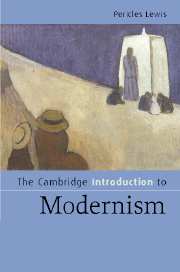Introduction
Published online by Cambridge University Press: 05 February 2015
Summary
In the late nineteenth century, writers and artists perceived a crisis in their fields of endeavor. The symbolist poet Stéphane Mallarmé wrote of a “crisis in verse,” the naturalist playwright August Strindberg of a “theatrical crisis.” Over the following generation, this crisis would manifest itself in questions about a central feature of literature and art: their ability to represent reality. At least since Plato and Aristotle, the arts had been associated with mimesis, the imitation or representation of reality. Although other features of art, notably its rhetorical effects on its audience and its ability to express the emotions or thoughts of the artist, had been prized by various periods or movements, these had never been entirely detached from art's power of representation. By the early twentieth century, however, some artists began to pursue an art that no longer claimed to represent reality. The symbolist painter Maurice Denis observed in 1890, “It is well to remember that a picture – before being a battle horse, a nude woman, or some anecdote – is essentially a flat surface covered with colors assembled in a certain order.” Twenty years later, painters were arranging colors on flat surfaces – or even pasting objects onto flat surfaces – in order to create abstract designs, with no battle horse, nude woman, or other anecdote whatsoever.
- Type
- Chapter
- Information
- The Cambridge Introduction to Modernism , pp. 1 - 34Publisher: Cambridge University PressPrint publication year: 2007
References
- 5
- Cited by



